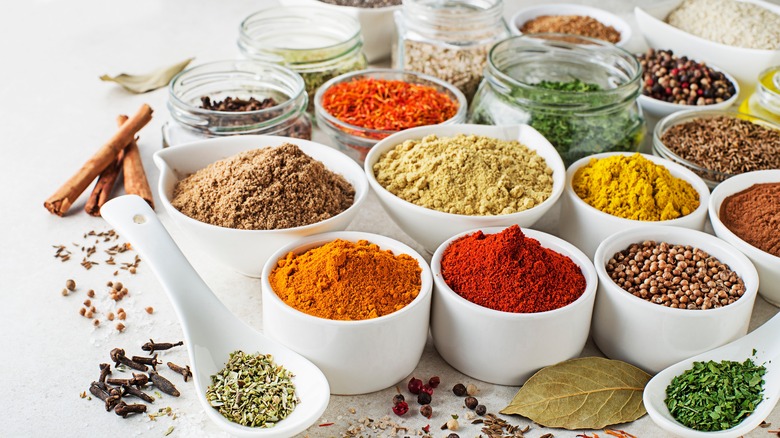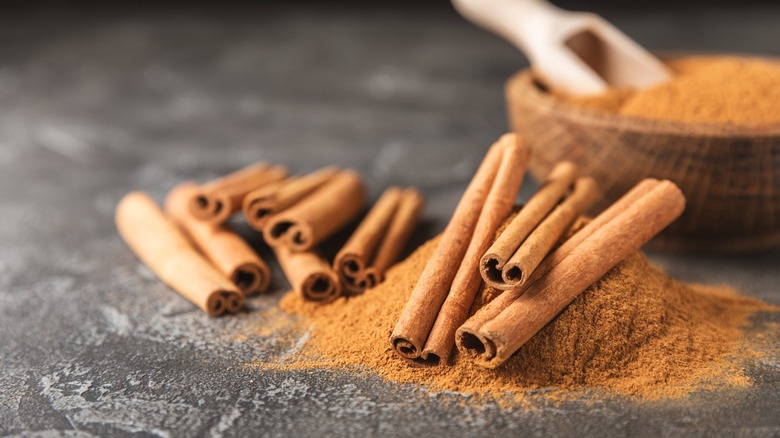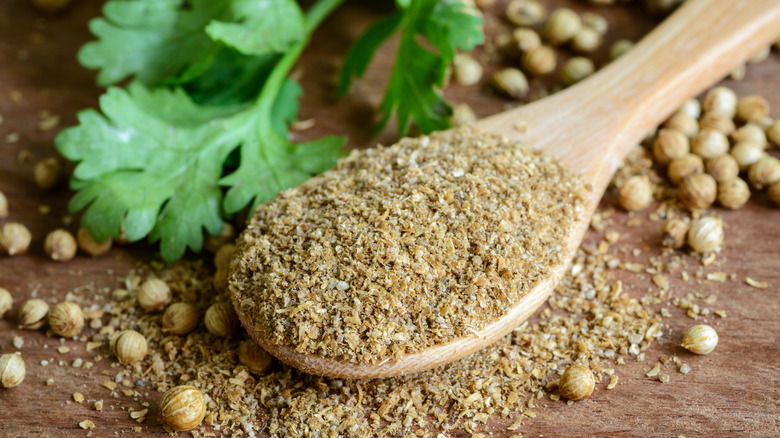The 3 Spices That Are Always Worth Buying Pre-Ground
Spices are essential to enhancing any dish — as long as you know how to use them. Whether you're using a basic salt-and-pepper combination or building an entire dish from spice blends, spices can either elevate what's there or create something entirely new. Pre-ground spices are great in terms of their ease of use, and the grocery store spice aisle is loaded with almost every spice you can imagine. But for the most flavor, it's often recommended to grind your own spices to enjoy them at their freshest. Still, not every spice is so easy to grind by hand, so three in particular that are worth pre-buying are cinnamon, coriander, and cumin.
Grinding spices by hand requires some elbow grease, and each of these three spices has tough fibers that make it hard to grind into that fine powder you're used to seeing on store shelves. Unless you have a spice grinder, it might not be worth the effort.
Some spices are worth buying pre-ground
The most common way to grind spices by hand is using a mortar and pestle. This tool has been around for nearly 40,000 years and consists of a bowl and knobbed handle made from some kind of durable material, such as ceramic or stone. You place whole spices in the bowl and then press down with the pestle to grind them. But for cinnamon, cumin, and coriander, that fine powder grind takes a ton of effort compared to something like grinding your own pepper.
Whole cinnamon comes in a hard, stick-like form, while cumin comes as small, narrow seeds. Whole coriander looks small and round. All of them are tough and don't grind easily. Of course, you can technically grind these spices by hand, but don't expect them to be as smooth as what you'd find in the spice aisle. And since a little goes a long way with these flavors, coarser spices mean they're harder to measure and could result in over-seasoned food.
Why should you grind spices yourself?
Freshly ground spices are generally considered more flavorful than those that come pre-ground from the store. That's because spices are filled with what are known as volatile oils, which give these seasonings their flavor. When they're first exposed to air, they are at their strongest and most flavorful, but as that air exposure continues, the flavor dulls.
The mortar and pestle might be the most traditional method and the best option by hand, but thanks to technology, there are other ways to grind whole spices with ease — even the more fibrous ones. You don't even need to own a spice grinder; just add the whole spices to a high-speed, good-quality blender, and let the blender do the work. It will grind the spices into a fine powder, though you might have to stop and mix the spices a bit just to make sure the blade hits every part evenly. This is a great solution because it allows you to freshly grind these spices while also getting that powdered texture you want.


